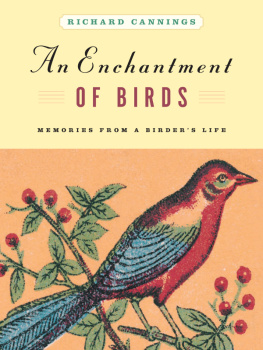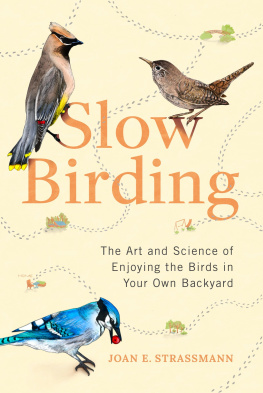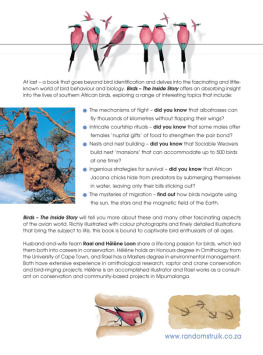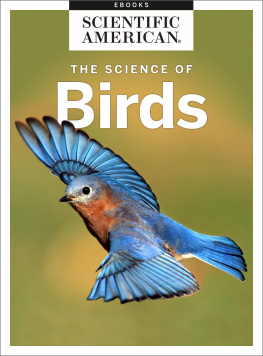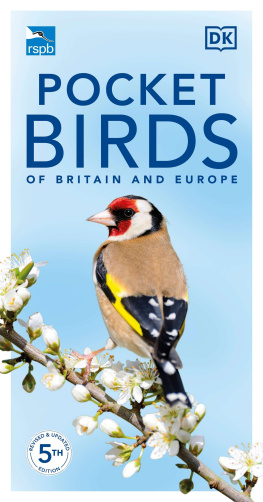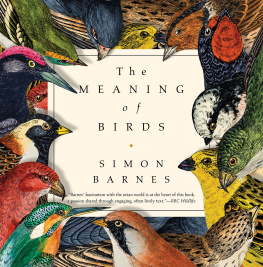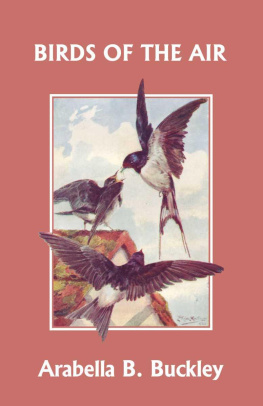An Enchantment
OF BIRDS
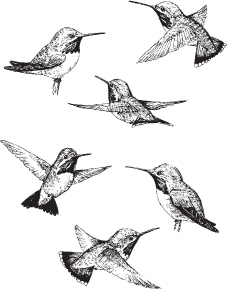
RICHARD CANNINGS
Illustrations by Donald Gunn
An Enchantment
OF BIRDS

MEMORIES FROM A BIRDERS LIFE


Copyright 2007 by Richard Cannings
All rights reserved. No part of this book may be reproduced, stored in a retrieval system or transmitted, in any form or by any means, without the prior written consent of the publisher or a licence from The Canadian Copyright Licensing Agency (Access Copyright). For a copyright licence, visit www.accesscopyright.ca or call toll free to 1-800-893-5777.
Greystone Books
An imprint of Douglas & McIntyre Ltd
2323 Quebec Street, Suite 201
Vancouver, British Columbia
Canada V5T 4S7
www.greystonebooks.com
David Suzuki Foundation
2192211 West 4th Avenue
Vancouver, British Columbia
Canada V6K 4S2
Cataloguing data available from Library and Archives Canada
ISBN: 978-1-55365-235-9 (pbk.)
ISBN: 978-1-92668-508-3 (ebook)
Copy editing by Iva Cheung
Jacket design by Jessica Sullivan
Jacket image csaimages.com
Illustrations by Donald Gunn
We gratefully acknowledge the financial support of the Canada Council for the Arts, the British Columbia Arts Council, and the Government of Canada through the Book Publishing Industry Development Program (BPIDP) for our publishing activities.
TABLE OF CONTENTS
I HAVE ALWAYS BEEN enchanted with birds. There was no moment of epiphanythe sighting of a brightly colored tanager that piqued my curiosity about its identity or a close encounter with an eagle that let me see the world through avian eyes. Many of my birding colleagues can point to such an event, a day that divides their life into before birds and after birds. But birds were always part of my life. The origin of this fascination is perhaps obviousI was born into a family that lived and breathed nature. We talked about birds over dinner, my parents searched out rare flowers on family outings, and my father wrote down everything in his diary of nature notes.
Ive often wondered what got my father interested in birds, since his mother was not an outdoors person at all and he never knew his own father. My grandfather had immigrated to Canada from the slums of Bristol and succumbed to the double scourge of pneumonia and tuberculosis when my father was only two. My grandfather kept a diary as well and wrote of Sunday walks with his brothers and friends through the English countryside. Although they often had barely enough money to buy food, he and his brothers managed to save enough between them to buy a guide to British wildflowers. When he moved to British Columbia, his diary became mostly brief accounts of what work he managed to find in the local mines or ranches and how little he was paid for it, but some of his journal entries mention that he was collecting butterflies to send back to the natural history museum in Bristol.
My father came to serious birding later in life and claims that the interest was sparked by childhood hikes through the wild prairies and woodlands, and he even remembers a series of bird identification cards printed in cigarette packages that caught his eye (though he never smoked). As I grew up I found myself keeping a notebook like my fathers, jotting down the birds I saw each day. My two brothers are both professional biologists and keen naturalists, and my son is now a good birder as well. So perhaps there is some genetic link to our attraction to nature, a group of genes that predispose one to curiosity about the world and the creatures we share it with.
Whatever the origins of this interest, it is indeed an enchantment. Once the spell has been cast, you forever experience the world differently, eyeing forests as if you were a woodpecker looking for nesting snags, subconsciously counting migrating geese as they fly overhead, trying to decide if that hooting owl is a male or female. Although some might think that these habits border on an obsession, I feel that the world would be a better place if we all looked more closely at birds and tried to understand how they perceive their surroundings.
Im often asked what my favorite bird is, and I always have difficulty coming up with a single candidate. The birds in this book are perhaps a short list of my favorites, some because of special experiences Ive had with them, some because their songs touch my soul, some because they simply do very interesting things. Since I grew up and still live in western Canada, many of the species chosen have a western flavor, but most are widespread and familiar to birders across North America. I hope their stories will touch you as well and perhaps begin to cast a spell that will last a lifetime.
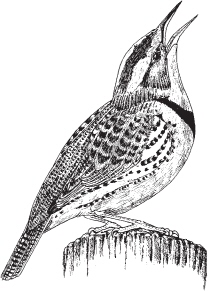
M Y EARLIEST MEMORIES are of meadowlarks. Their songs rang through my open bedroom window as the morning sky brightened, and they have become etched in my mind as a coordinate of home. Whereas the hypnotic sounds of crickets and lisping sprinklers were my lullabies as a very young boy, meadowlarks were my alarm clocks, waking me to the warm summer mornings. Their songs are the anthem of the grasslands, as much a part of life in the West as the taste of saskatoon berries, the smell of sagebrush after a thunderstorm, and the color of the evening sky above the black mountains in the summer twilight.
Just before I was born, my parents built a house in a new rural subdivision carved out of wild bunchgrass. Before our family owned the land it was meadowlark country, and for the first five or six years that we lived there the birds came back to the yard each spring, until the young apple orchard turned the prairie into a deciduous woodland and they had to look elsewhere to nest. Western meadowlarks are birds of the grasslands and cannot tolerate forests, though they will happily sing from a ponderosa pine growing high and lonesome amid the grass. But for those few years the meadowlarks were a big part of my backyard, the males singing from the freshly planted apple trees, the young riding on the back of the tractor as it mowed the long grass in midsummer.
My brothers and I spent much of our childhood across the fence, playing on the unplowed grasslands of the Penticton Indian Reserve. In winter we would toboggan down the steep slopes of the hills, using the snowdrifts behind each sagebrush as jumps. When spring came we looked for the first buttercup, then, when the ground was yellow with them, tried to find the one with the most petals. I learned which plants were tastiest and was particularly fond of the tangy flavor of a distinctive gray, grass-like leaf that came directly out of the spring soil. Only later did I learn to my embarrassment that I had been desecrating one of the most beautiful plants of the grassland, the mariposa lily. We would push toy trucks around the clumps of prickly pear cactus, hide in the rose thickets, and tryalways unsuccessfullyto sneak up on coyotes. Occasionally we would see more uncommon birdsa flock of gray partridge exploding from the shrubs, a burrowing owl standing watchfully next to its subterranean nest, or a long-billed curlew calling mournfully in the distancebut we were always surrounded by meadowlarks. Their songs were the soundtrack of our young lives.
Next page
